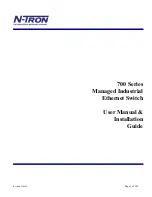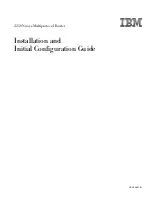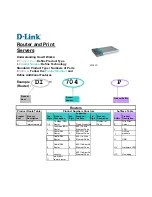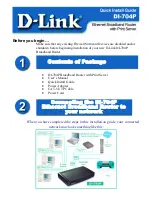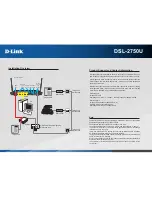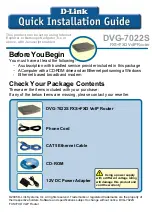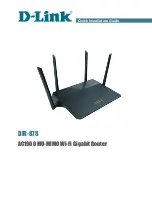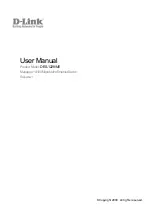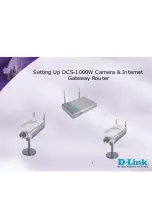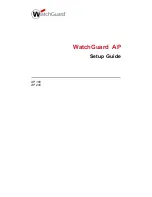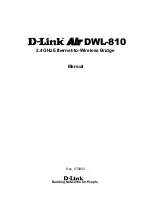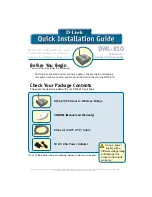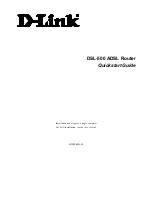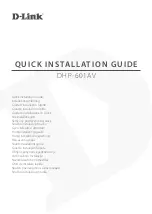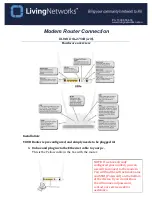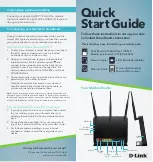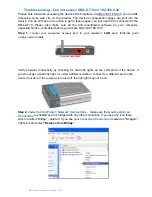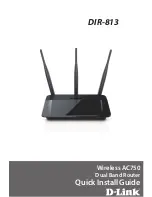
10
7
5.2 CONNECTING TO THE 10BASE-T ETHERNET PORT
The RJ-45 Ethernet port on Model IM1/I is designed to connect
directly to a 10BaseT network. Figure 5, below, shows the 10BaseT
RJ-45 port pin description. You may make connections up to 330 feet
using Type 4 or 5 cable.
5.2.1 Connecting the 10Base-T Ethernet Port to a Hub
The Model IM1/I 10Base-T interface is configured as DTE (Data
Terminal Equipment), just like a 10Base-T network interface card in a
PC. Therefore, it “expects” to connect to a 10Base-T Hub using a
straight-through RJ-45 cable. Use the diagram below to construct a
cable to connect the IM1/I to a 10Base-T Hub.
IM1/I
10Base-T Hub
RJ-45 Pin No.
RJ-45 Pin No.
1 (TX+)
1 (RX+)
2 (TX-)
2 (RX-)
3 (RX+)
3 (TX+)
6 (RX-)
6 (TX-)
5.2.2 Connecting the 10Base-T Ethernet Port to a PC (DTE)
The Model IM1/I 10Base-T interface is configured as DTE (Data
Terminal Equipment). If you wish to connect the IM1/I to another DTE
device such as a 10Base-T network interface card in a PC, you must
construct a 10Base-T crossover cable as shown in the diagram below.
IM1/I
10Base-T DTE
RJ-45 Pin No.
RJ-45 Pin No.
1 (TX+)
1 (TX+)
2 (TX-)
2 (TX-)
3 (RX+)
3 (RX+)
6 (RX-)
6 (RX-)
1 TD+ (data output from IM1/I)
2 TD- (data output from IM1/I)
3 RD+ (data input to IM1/I)
4 (no connection)
5 (no connection)
6 RD- (data input to IM1/I)
7 (no connection)
8 (no connection)
1
2
3
4
5
6
7
8
Figure 5.
Model IM1/I RJ-45 Connector Pinout
4.0 CONFIGURATION
The Model IM1/I module plugs into Patton’s fiber and copper
baseband modems to provide Ethernet LAN extension. The IM1/I has
no switches or jumpers and does not need to be configured. However,
factors such as ty type of medium, throughput across the link and
clocking mode must be determined by the settings of the baseband
modems. Please refer to your baseband modem (i.e. 1092A, 1093,
1095, 1185, etc) to make the following settings.
1)
Bit Rate:
The DTE rate setting of your base unit corresponds
to the throughput of your IM1/I bridge module. Use higher
speeds to allow maximum throughput to your extended LAN.
NOTE:
The IM1/I only supports synchronous speeds.
2)
Clocking Mode:
Set the clocking modes on the base units so
that one unit is configured for Internal clocking mode and the
other unit is set for Receive Recover clocking mode.
3)
All other base unit settings depend upon your application and
on the application medium (twisted pair or coaxial cable)
BASE UNIT CLOCK MODES
Unit “A”
Unit “B”
Internal Clock Setting
Receive Recover Clock Setting
NOTE:
Unit “A” and Unit “B” are arbitrarily chosen. It does not matter which
unit is “A”, and which is “B”.





















